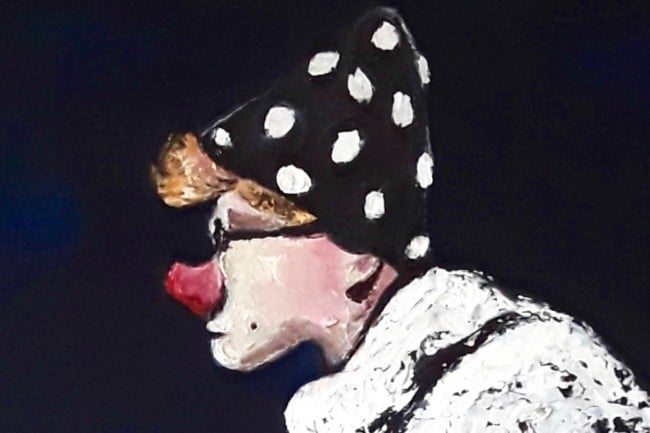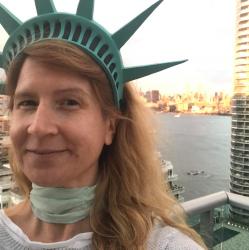Hoboken has plenty of historical bragging rights: the birthplace of little league baseball, the hometown of Frank Sinatra, and the location of MutzFest to name a few. But many Hobokenites might be surprised to learn about Hoboken’s role in the tradition of circus arts. The Circus Arts Center that lived at 412 Washington in Hoboken during the late 1970s sparked a new branch of American circus focused on training young performers in Old World traditions. Circus Arts Center student Karen E. Gersch has brought historical photographs and her own celebratory artworks depicting the participants in that school to the Hoboken Historical Museum in coordination with its exhibit The Avenue: A History of Washington Street. Read on to learn more about Hoboken’s role in circus history.
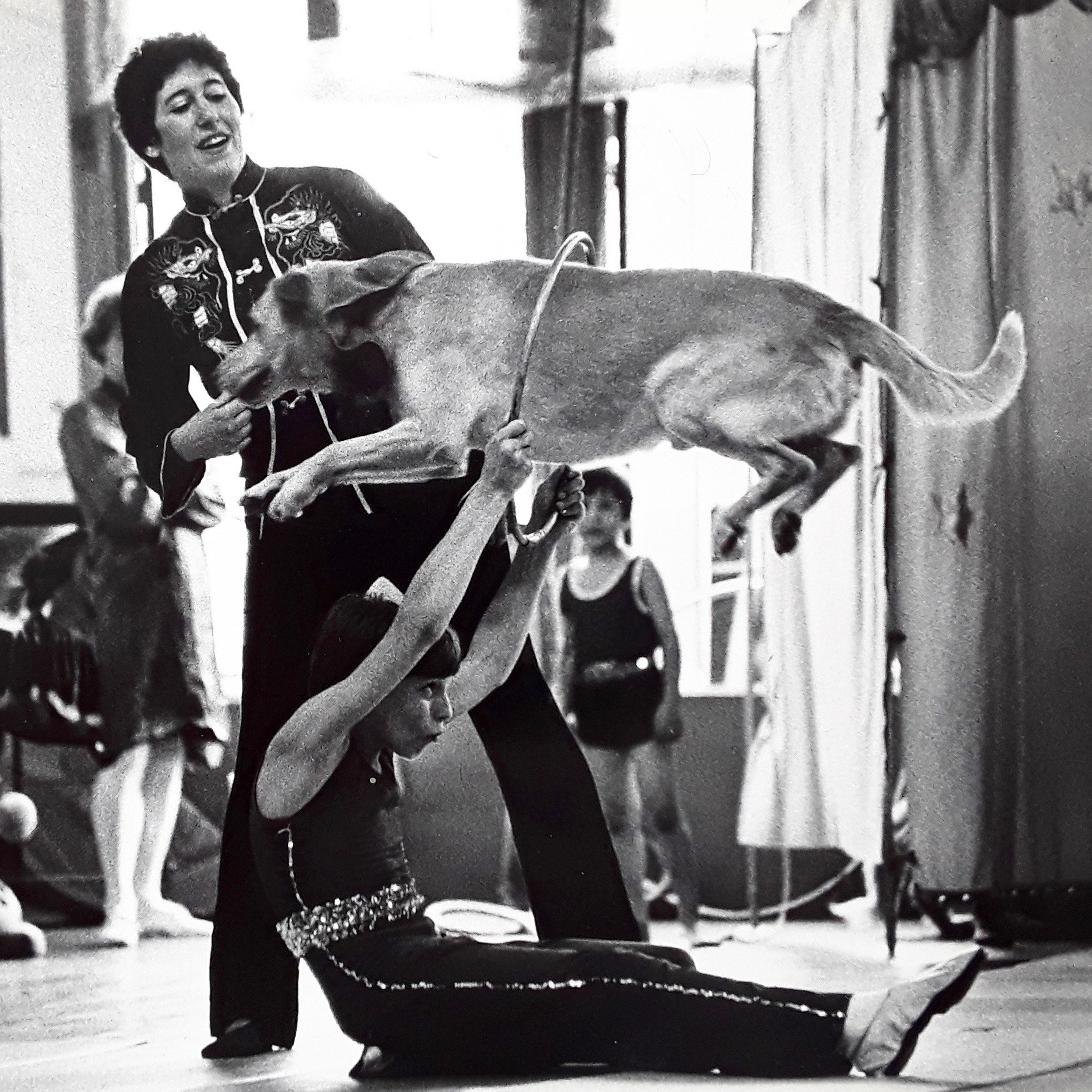
(Photo credit: Karen Gersch)
^Karen Gersch instructing young Noel Selegzi in his trick with Little Face the circus pooch
Rooted in Tradition
This prestigious circus school was founded by husband and wife team Gregory Fedin and Nina Krasavina, former stars of the Moscow State Circus, who defected from the Soviet Union in 1974. It is because Fedin and Krasavina were steeped in the most disciplined techniques of circus performance, bringing with them a rigid philosophy regarding their art, that the school was formed in the first place.
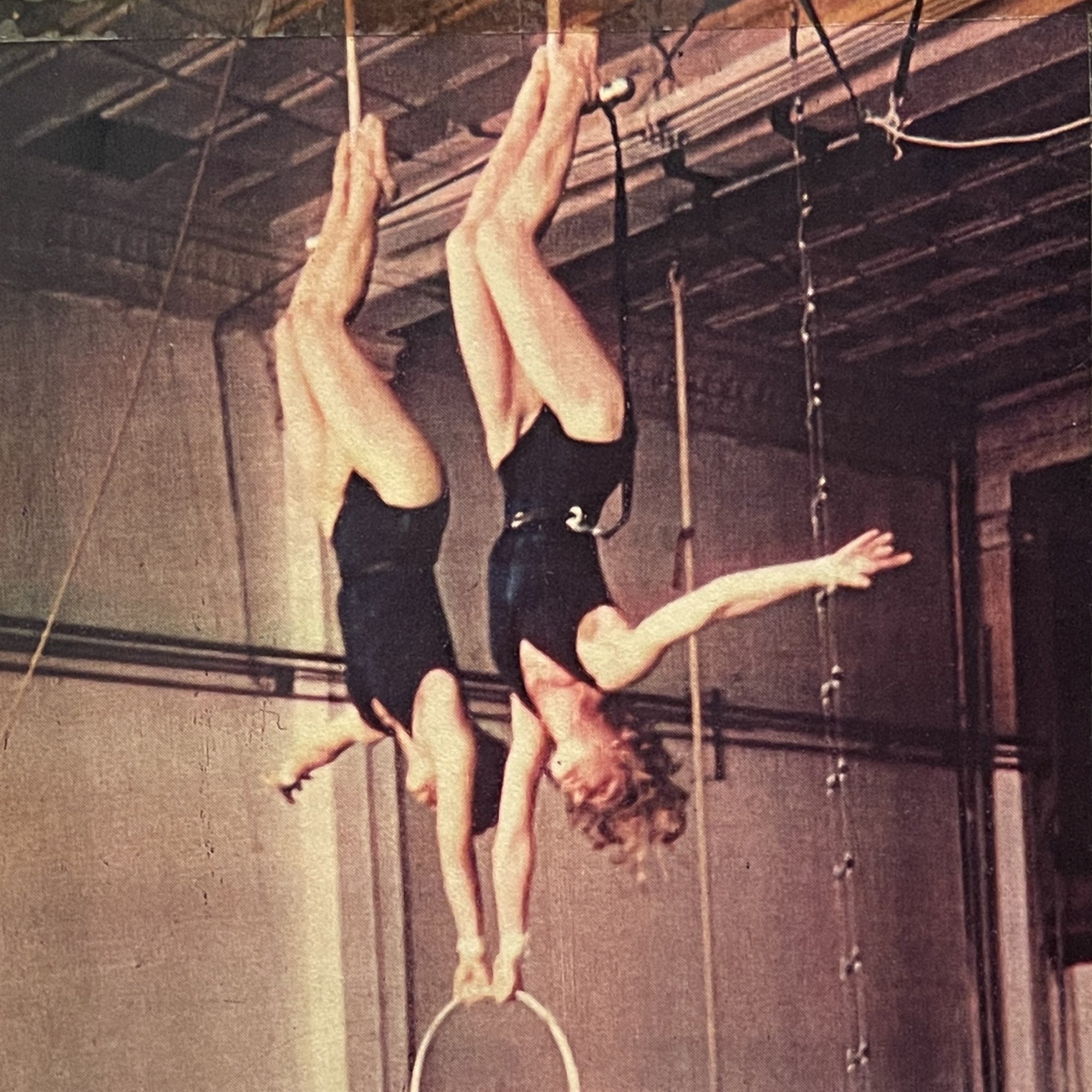
(Photo credit: Jessica Hentoff)
^Meret Ryhiner and Jessica Hentoff (holding ring), Sonja Furiya (ankle hang)
The Hoboken Circus Arts Center was, in a very real way, a response to and against the prevalent American circus aesthetic and attitude of the time. To Fedin and Krasavina, the American circus lacked substance. American circus performances were more reliant upon pyrotechnics, glitz, and glam (think Barnum and Bailey) than the pathos and beauty of the European circus troupes.
In a 1981 article on the Circus Arts Center in The New York Times, Krasavina described the seriousness of the Russian approach to circus as an art form: “Discussing circuses in the Soviet Union, she said that clowns there received the same kind of consideration as dancers from the Bolshoi and earned as much as architects or engineers.”
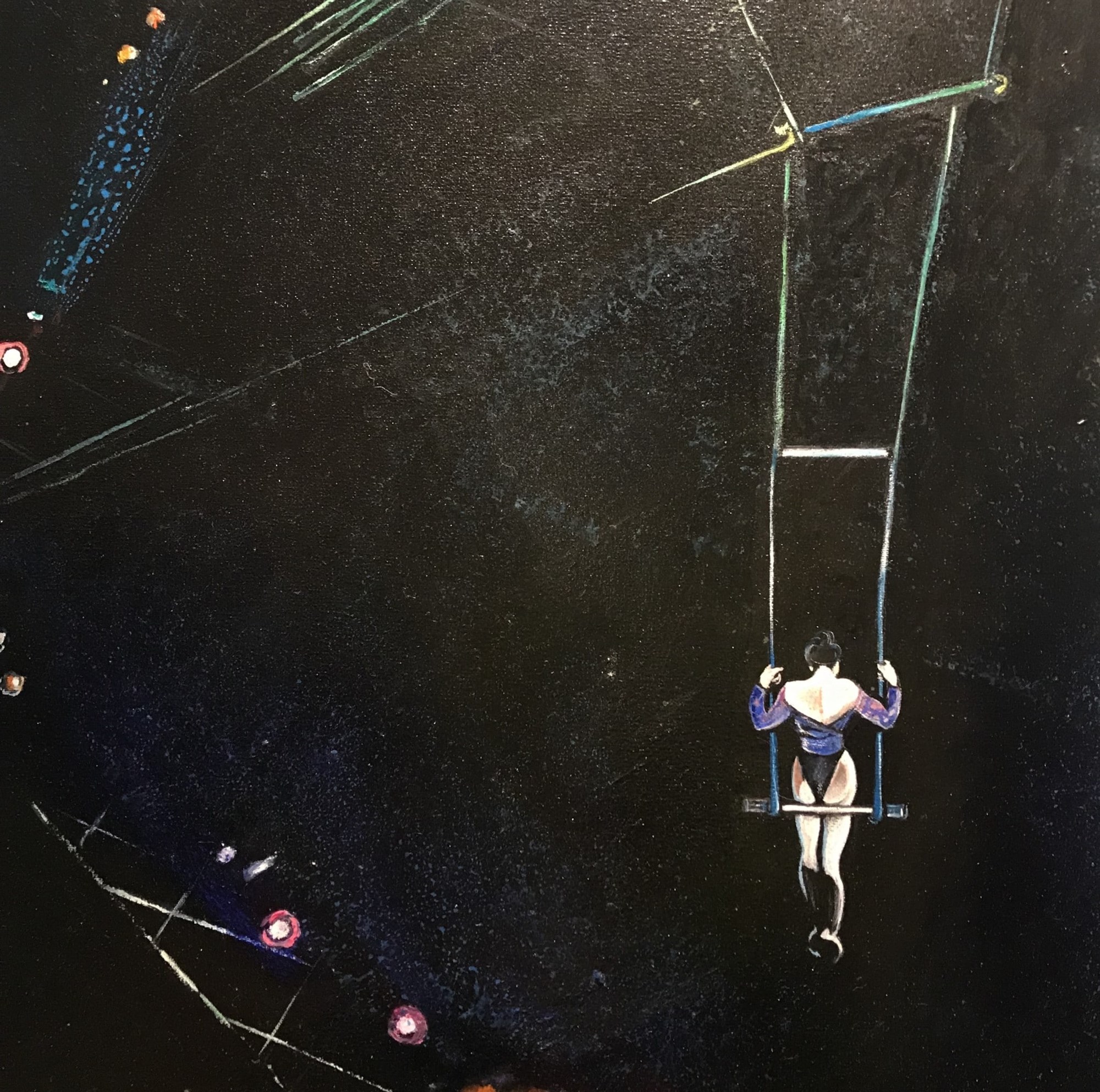
(Photo credit: Sarah Hermes Griesbach)
^Karen Gersch’s Night Swing, on view at the Hoboken Historical Museum
Krasavina’s point could be widened to make a comparison between American support and respect for the circus as an art and the support and respect given to circus arts by the majority of European governments where circus, like all the arts, was and is subsidized by the state.
A Forward-Looking Vision
The Hoboken school was born out of Fedin and Krasavina’s message to the professionals performing with them in the Big Apple Circus that they were capable of more and better. The middle-aged Russian couple was already teaching the majority of the young Big Apple Circus performers in Karen Gersch’s New York City loft. The students quickly became loyal converts to the Russian couple’s cause to bring more art to circus arts and, with that decision made, all that was left was to find an appropriate space for a school.
Read More: A Historical Walking Tour of Jersey City Heights
The Circus Arts Center at 412 Washington Street occupied a 4,000-square foot room on the second floor of the Queens Department Store. Its open space and 25-foot ceilings allowed for trapeze acts, traditional Russian ladder acts, and high towers of acrobats balanced on bikes and tightrope wire. In a backroom, Fedin built a workshop where he constructed the apparatus required for each act, including complex mechanical gears that would need to be broken down for storing and transporting between appearances.
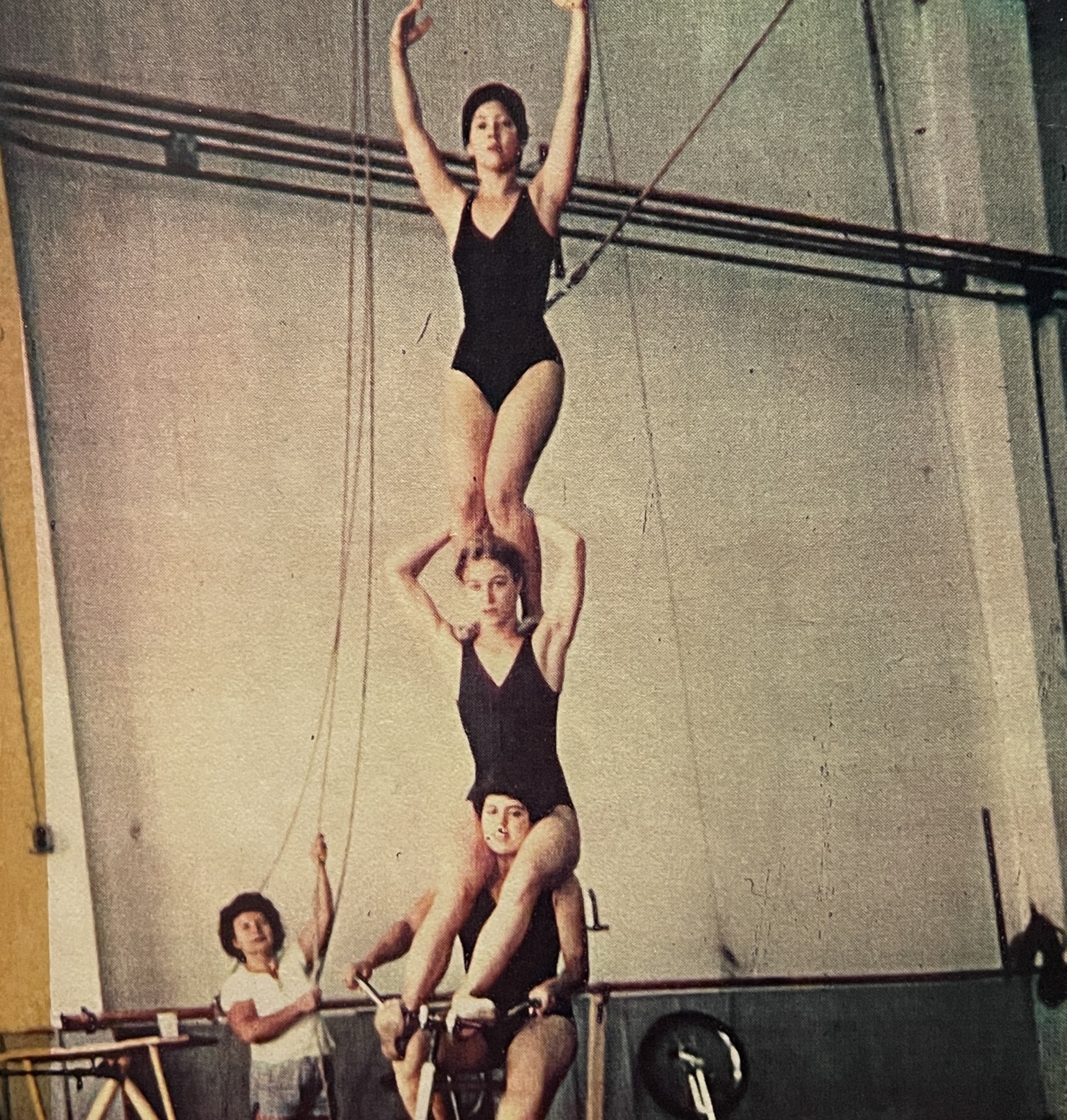
(Photo credit: Jessica Hentoff)
^Jessica Hentoff (bottom), Meret Ryhiner (middle), Sonja Furiya (top), Nina Krasavina (holding the mechanic)
The school was not just dedicated to the training of young adult professionals. Fedin and Krasavina were intentional in their development of a youth program for beginner circus students. The youth classes were designed to teach self-discipline through intense training that would result in confidence and grace, as the children choreographed and performed solo and partnered acts to be proud of.
A Living Legacy
Karen Gersch and her fellow Circus Arts Center alumni are currently living the next chapter of the story that began in Hoboken. Some 20 professionals within the cadre of those who trained together in the 1970s went on to not only have renowned circus careers of their own but to start and lead circus enterprises of their own.
The great legacy of Fedin and Krasavina’s training is, in part, an emphasis on uncompromising, focused training in the physical expertise that make circus performers artists. But that legacy also takes shape in the many youth programs developed by Fedin and Krasavina’s students. And what those students, many of whom are in their 60s, now teach is a strength that can only come from within.
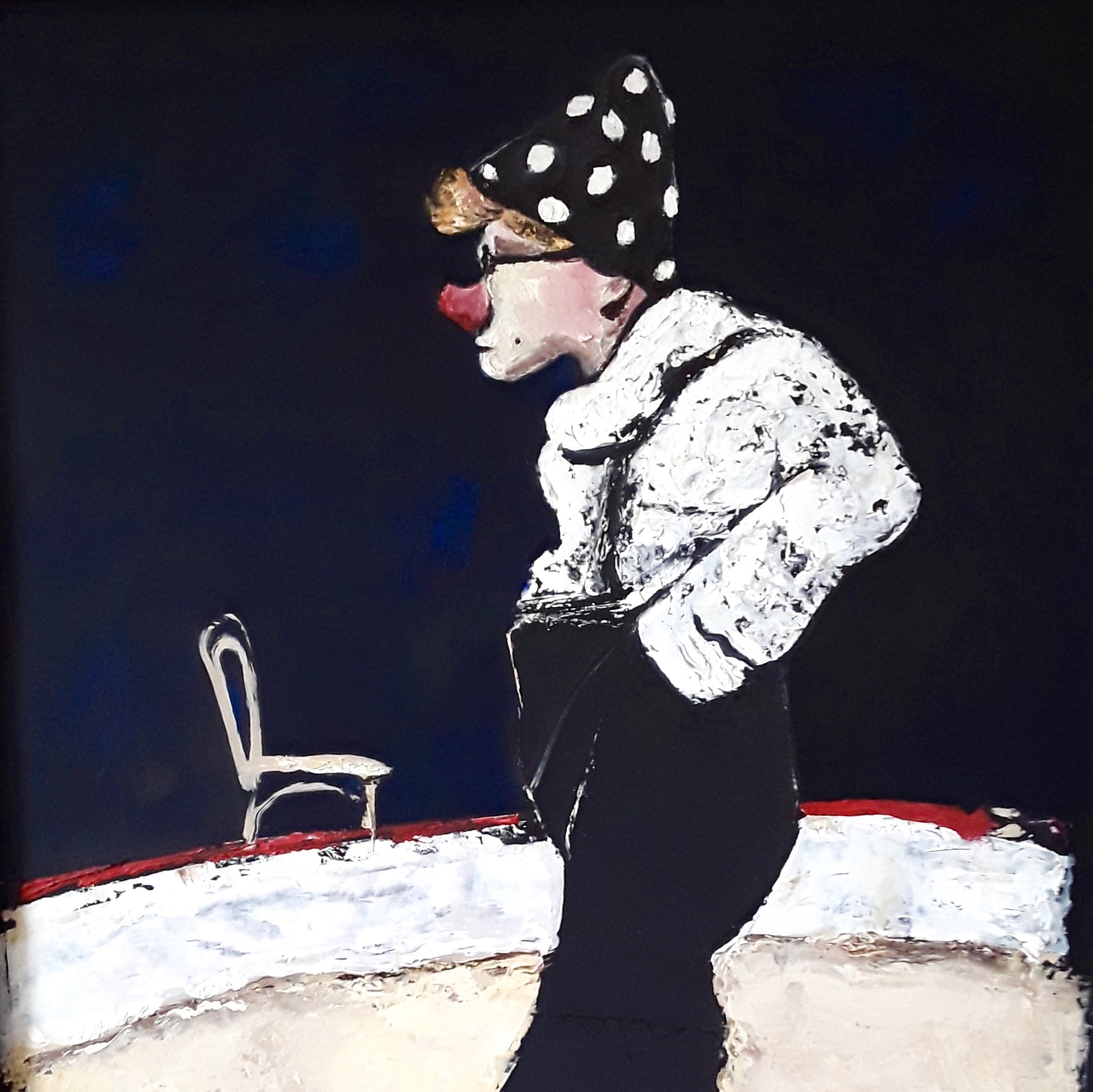
(Photo credit: Sarah Hermes Griesbach)
^Karen Gersch’s Nickel Storms the Ring, portrait of Hoboken Circus Arts Center Co-Director Nina Krasavina
Many of the Hoboken Circus Arts School professional trainees who later formed programs around the country now offer classes on the trapeze, rings, trampoline, tightrope, juggling, contortionism, and clowning. The skill-based instruction is only part of what these programs teach. None of Fedin and Krasavina’s students went on to demand quite what Fedin had expected of them; “To do circus, you must steal hours from the grave,” was Fedin’s mantra. Still, they each have built their own programs around the belief that training and hard work are necessary to make magic. In the words of Gersch, “We were taught to find strength deep in the self in order to balance precariously.”
See More: Who Discovered Hoboken? A Brief History
Where Karen Gersch describes Fedin as unwavering in his demand that his students train until they’d reached perfection, she remembers Krasavina as able to demonstrate 100 styles of handstands while also able to bring the house down with her graceful clown improvisation. That emphasis on strength, balance, discipline and reverence for beauty is the cause of Gersch’s one-time balancing act partner, Jessica Hentoff’s, intense training program for her remarkably successful youth circus school, St. Louis’s Circus Harmony, a social circus.
Hentoff has built a program in St. Louis that brings the rigor she learned in Hoboken to any child interested in “defying gravity.” She’s made scholarships a top priority, and in so doing has sent numerous young people on toward professional training programs with Cirques in Canada, Australia, and elsewhere.
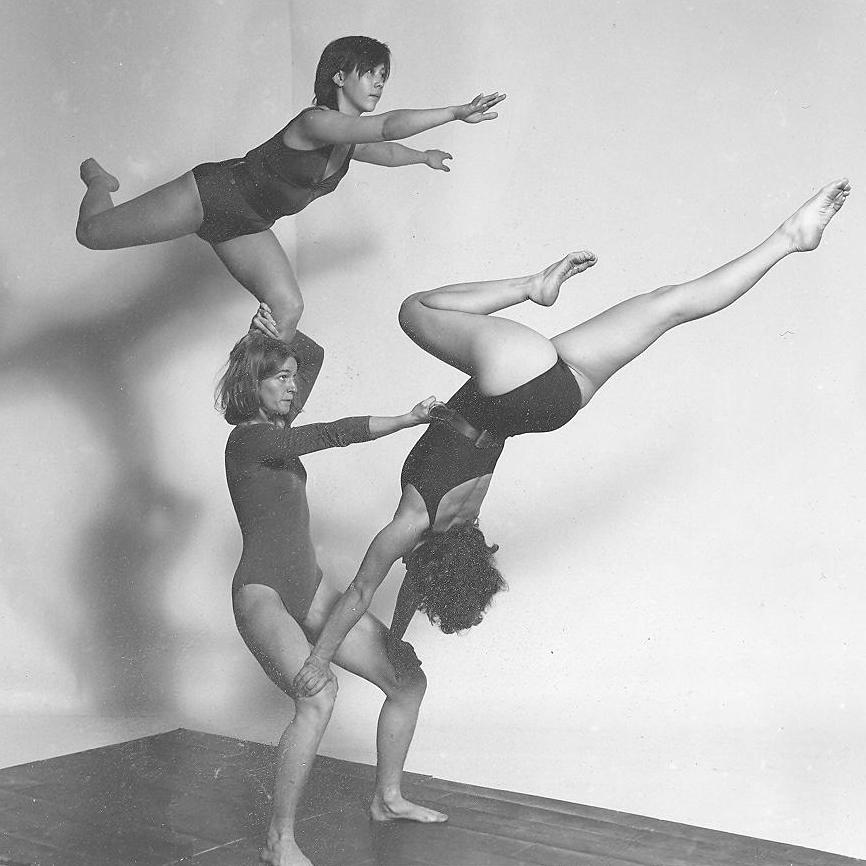
(Photo credit: Jessica Hentoff)
^Meret Ryhiner (bottom) Sonia Furiya (top), Jessica Hentoff (extended)
That moment in the mid to late 1970s when Gersch, Hentoff, and their colleagues broke from the Big Apple Circus to train in Hoboken with Fedin and Krasavina was a pivotal event. Yet few of the generations of circus students whose programs were born out of that serendipitous genesis are likely to know that they are the artistic grand and great-grandchildren of two Soviet defectors whose very existence was once wiped from the records of their home country.
To learn more about the Circus Arts Center or to see historical photos, visit the Hoboken Historical Society’s exhibit, The Avenue: A History of Washington Street, located at 1301 Hudson Street. Karen Gersch’s artwork will be on display from January 9 through February 27, 2022. The exhibit, CIRCUS LIVES: Hovering Above, Balancing Below, is reflective of Karen’s time with the circus.


